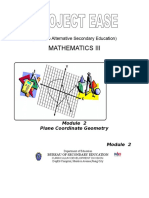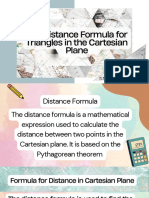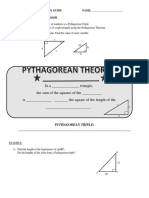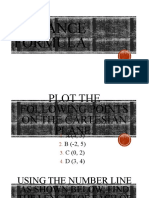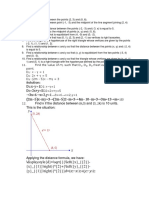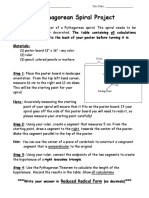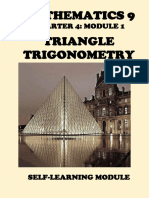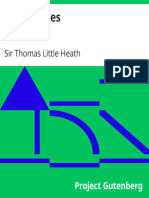0% found this document useful (0 votes)
40 views4 pagesSelf-Learning Module For Distance Formula
This self-learning module teaches the application of the distance formula to calculate distances between points and to prove geometric properties such as segment congruence and triangle classification. It includes examples, practice exercises, and a final assessment to reinforce learning. Students are encouraged to reflect on their understanding and performance throughout the module.
Uploaded by
RemelizaA.MariñasCopyright
© © All Rights Reserved
We take content rights seriously. If you suspect this is your content, claim it here.
Available Formats
Download as DOCX, PDF, TXT or read online on Scribd
0% found this document useful (0 votes)
40 views4 pagesSelf-Learning Module For Distance Formula
This self-learning module teaches the application of the distance formula to calculate distances between points and to prove geometric properties such as segment congruence and triangle classification. It includes examples, practice exercises, and a final assessment to reinforce learning. Students are encouraged to reflect on their understanding and performance throughout the module.
Uploaded by
RemelizaA.MariñasCopyright
© © All Rights Reserved
We take content rights seriously. If you suspect this is your content, claim it here.
Available Formats
Download as DOCX, PDF, TXT or read online on Scribd
/ 4






